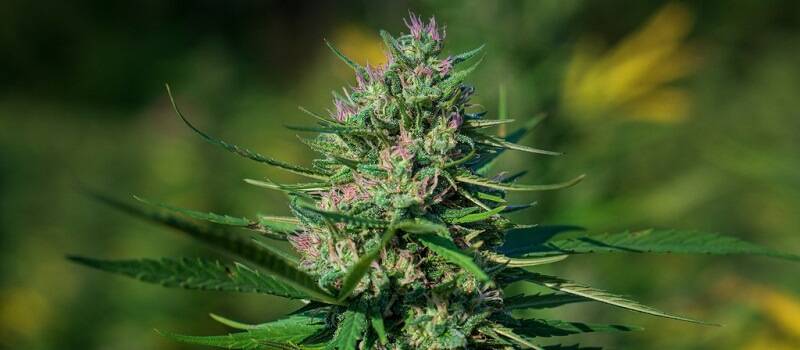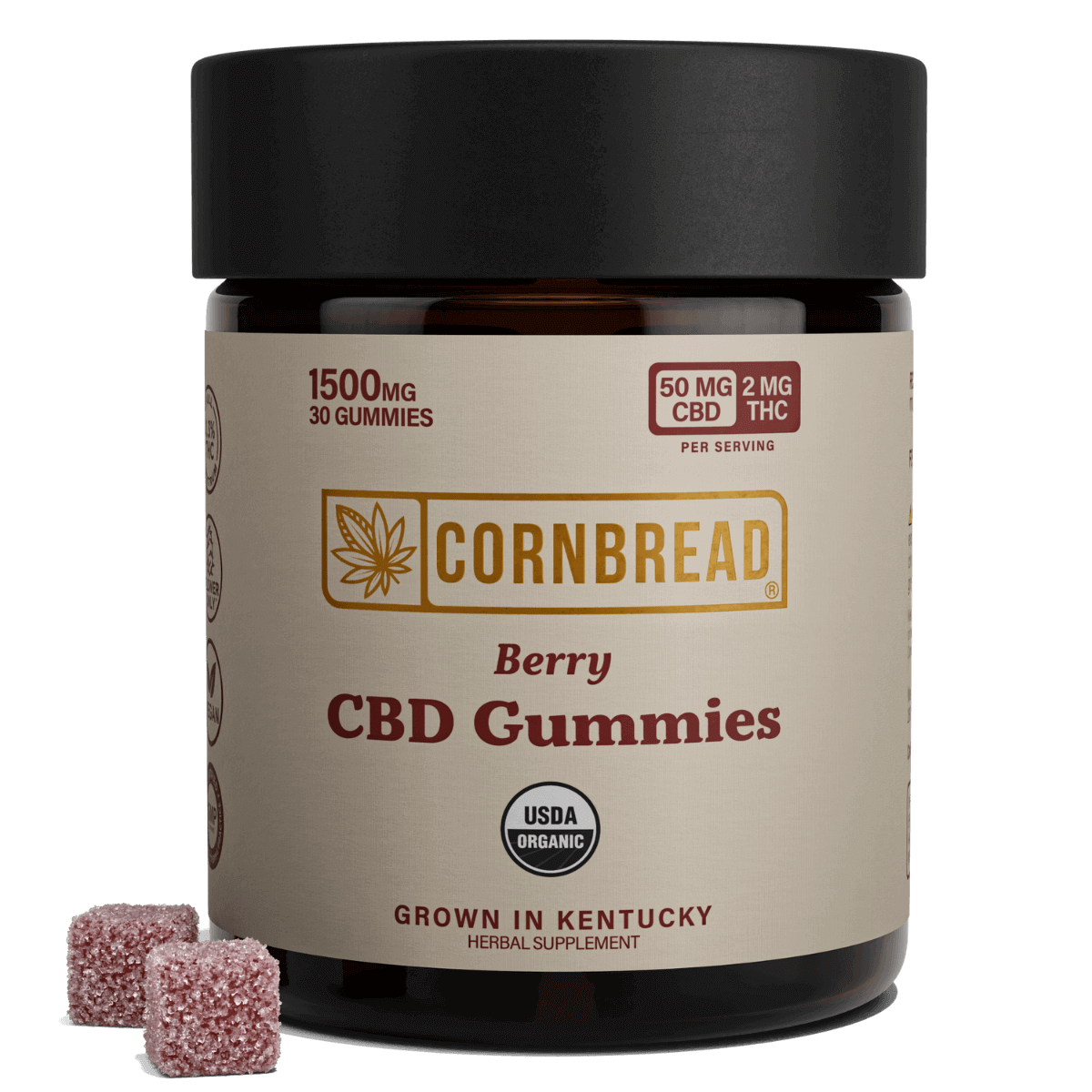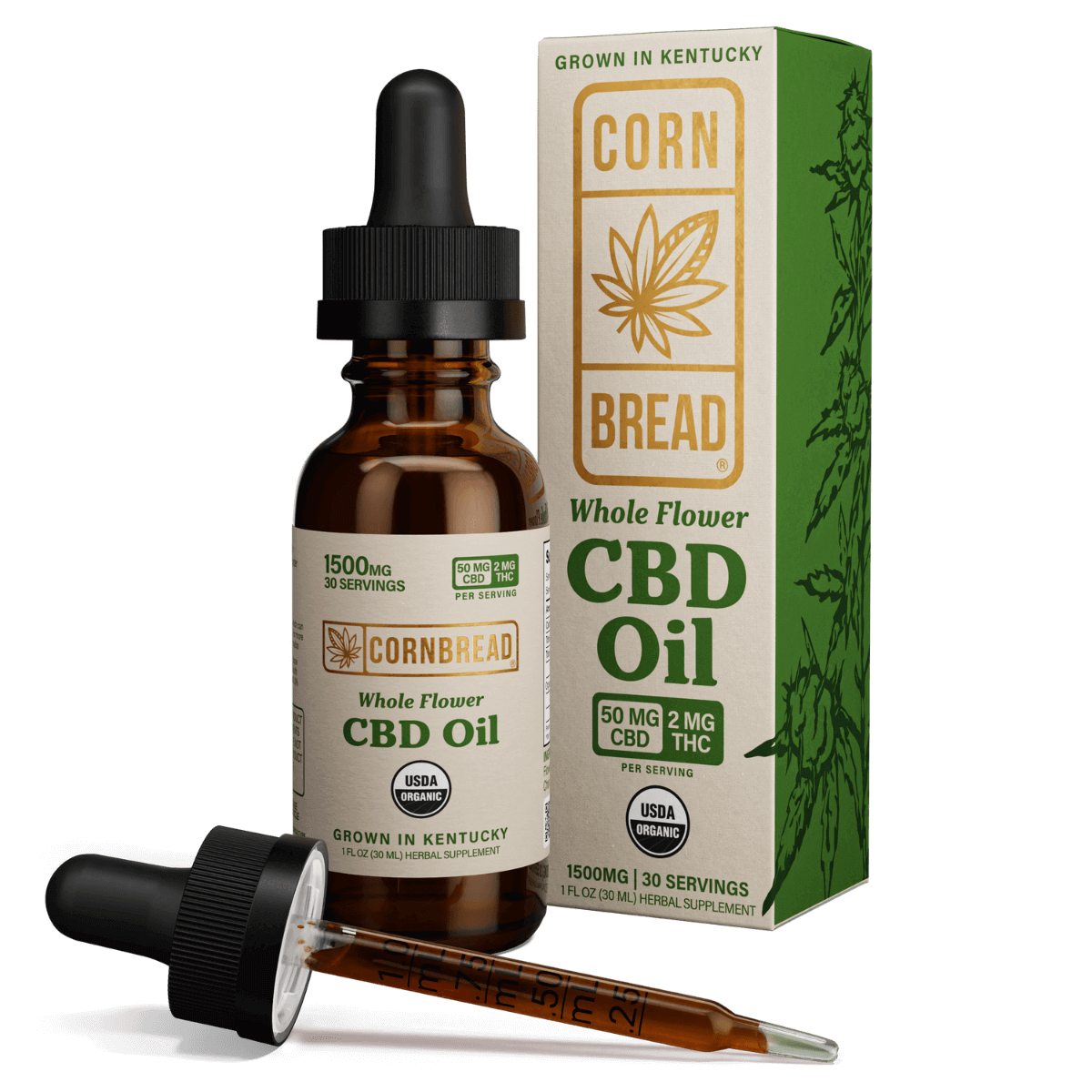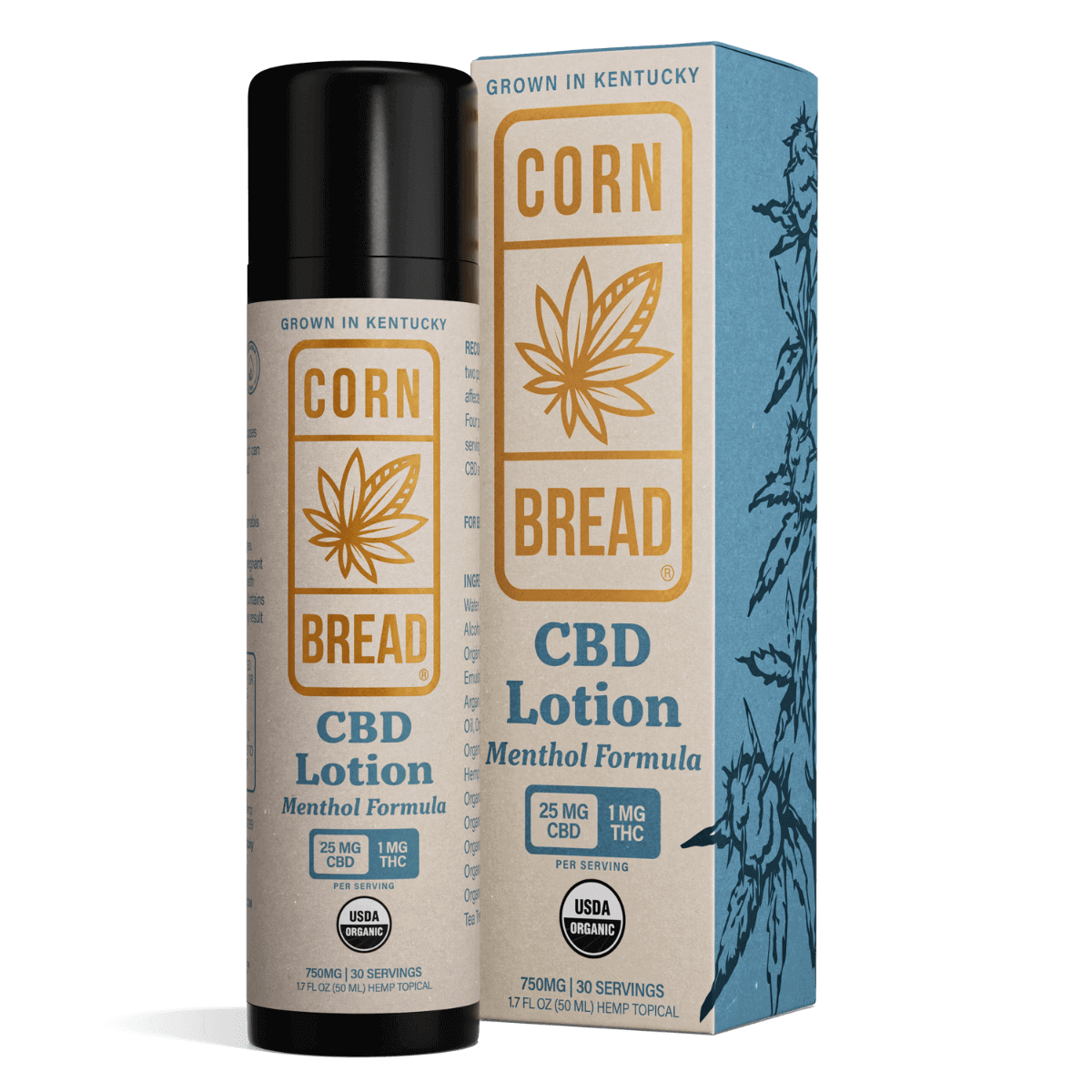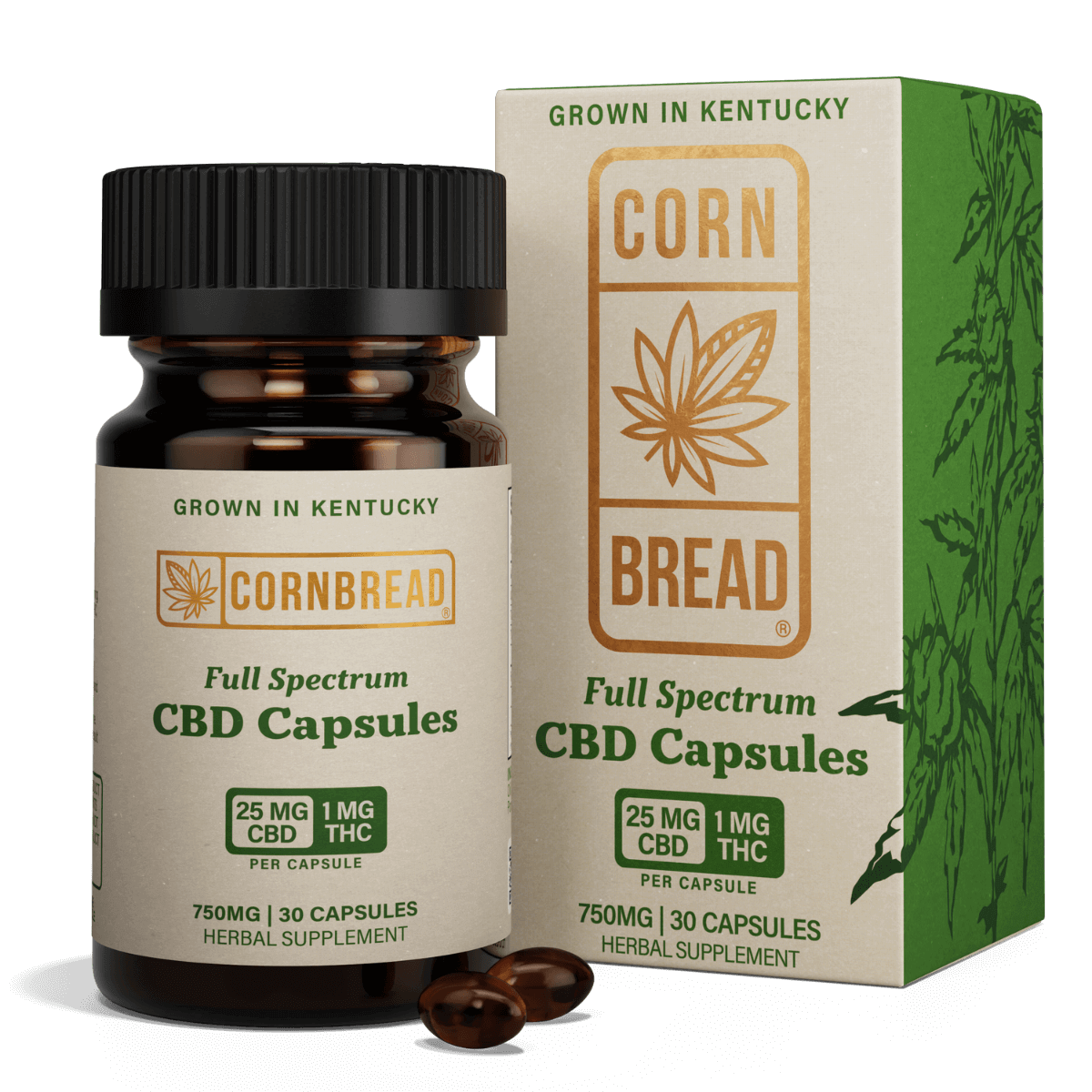Table of Contents
Introduction
CBD has become quite the staple in natural health and wellness circles, and much of American society in general. If you haven't tried CBD yourself, you almost certainly know someone who has (and who won't stop talking about how great it is). Every month, more than 7,000 people ask Google, "What does CBD stand for?" So if you're wondering the same thing, you're not alone.
CBD: What Does It Stand For?
So, what does CBD stand for? It's an abbreviation for "cannabidiol"—one of the main chemical compounds found in both the hemp and marijuana varieties of the cannabis sativa plant.
While hemp (as we know it today) is a relative newcomer to the scene, marijuana has long been used for its psychoactive and medicinal properties. Use of the plant dates back to 750 B.C.E. (or earlier) and it has a history across multiple civilizations (e.g., in China, Europe, and across the Roman Empire). In 1940, researchers isolated the chemical compound "cannabidiol" from marijuana; however, it was found that, unlike marijuana, CBD did not produce psychoactive effects. It would be another 24 years before the psychoactive factor, tetrahydrocannabinol (THC) would finally be identified.1
What's a Cannabinoid?
"Cannabinoid" is the word used to describe cannabis compounds like CBD and THC. In addition to these two, there are another 100+ cannabinoids found in cannabis plants. These compounds are also called phytocannabinoids (from "phyto-," meaning "plant") or exogenous cannabinoids (from "exogenous," meaning "originating outside the body").
Why so many different names? Because there's another type of cannabinoid, too—the kind you make inside your own body. The word "endogenous" means "originating within the body," so endogenous cannabinoids (aka “endocannabinoids”) are ones you produce yourself.
The Cannabis Sativa Plant: Hemp vs. Marijuana

Cannabis sativa is a flowering plant with two main varieties—hemp and marijuana. Both varieties contain over a hundred different cannabinoids, as well as other compounds, such as terpenes and flavonoids (responsible for the plant's aroma and color).
What does hemp mean, specifically? The term has historically been used to refer to varieties of cannabis grown for their fiber, or other plants grown for fiber. Hemp has been used to produce fabric, rope, paper, and more.
Recent changes in legislation have brought about a new use for the word "hemp." It’s now used to describe specially cultivated cannabis plants with low levels of THC. In fact, the THC content of a cannabis plant is the sole determining factor in whether or not the plant is marijuana or hemp.
-
Hemp
According to federal law, hemp plants may contain no more than 0.3% THC by weight. This small amount of THC isn't enough to produce a "high" effect, like one would get from marijuana. In addition to low levels of THC, hemp typically has high levels of CBD (its most prevalent cannabinoid). Hemp plants, and their cannabinoid extracts, are legal on a federal level and in most states. -
Marijuana
Marijuana plants, on the other hand, may have varying levels of THC, but they are always (and often much) higher than 0.3%. Due to its high concentration of THC, marijuana is psychoactive, readily producing a "high" feeling, in addition to other reactions. CBD is the second most prevalent cannabinoid in marijuana, although levels are much lower than in hemp.
Marijuana remains a federally controlled substance and, while many states have relaxed their laws regarding its medical or recreational use, it remains illegal (or partially illegal) in many parts of the country.2
Is CBD Legal?
The 2018 Farm Bill made hemp and its extracts (like CBD) legal on a federal level, as long as they contain no more than 0.3% THC by weight. So, hemp-derived CBD is federally legal (and legal in most states), but marijuana-derived CBD may not be. It's a good idea to check your local laws if you're unsure of the legal status of CBD products.3
Health Benefits of CBD
Since its discovery in 1940, we've learned a lot about cannabidiol and its many therapeutic benefits. There's still much we don't know. Through randomized clinical trials and studies, researchers continue to explore CBD and how it may affect conditions like chronic pain, multiple sclerosis, and substance use disorders. However, more research is needed to come to any conclusions.4,5,6
Still, there are certain benefits that CBD is known to produce. When consistently included in a wellness regimen, CBD can:
-
Elevate mood
-
Support a healthy sleep cycle
-
Reduce aches and pains (in particular, from inflammation caused by exercise or repetitive physical motion)
-
Alleviate daily stress
After a quick look at the list above, it's apparent that CBD supports both emotional and physical wellness. How does it do this? By interacting with the endocannabinoid system.
The Endocannabinoid System
The Endocannabinoid System (ECS) is a network of cannabinoid receptors, enzymes, and endocannabinoids (the ones created within the body). The receptors can be found all throughout the body's systems but are highly concentrated in the gut, as well as the central and peripheral nervous systems.
The ECS regulates several vital functions including digestion, immune and pain responses, sleep, and appetite. Each part of the ECS contributes to the ultimate purpose of maintaining overall balance (aka homeostasis) throughout the body's many systems.
The Components of the ECS
-
Cannabinoid receptors are located on various tissues, throughout nearly every system of the body. They're like little buttons waiting to be pressed by cannabinoids in order to create a reaction.
-
Endocannabinoids "press,” to continue the analogy above, the cannabinoid receptors by binding to them, thus triggering specific responses (e.g., stimulating hunger, increasing body temperature, etc.).
-
Enzymes break down endocannabinoids after they've performed their functions.
Phytocannabinoids (from cannabis) are similar in structure to endocannabinoids, and so they have the ability to interact with the ECS. THC binds to a specific cannabinoid receptor in the brain, which is why it produces such strong psychoactive effects. If you didn't have the receptors, THC wouldn't get you high.
CBD also interacts with the ECS, but it doesn't appear to bind as readily with receptors as THC does. Instead, it prevents the breakdown of other cannabinoids and endocannabinoids, maximizing their effects by allowing them to build up in the ECS. This is why CBD is able to produce such impressive and varied therapeutic benefits.
Types of CBD Products
We've discussed how CBD can improve sleep, mood, stress levels, and wellness in general. Now it's time to address how to incorporate CBD into your own wellness regimen. You have several options:

-
CBD Oil
CBD oil is one of the first (and still one of the most popular) types of CBD products on the market. What does CBD oil stand for? It's not like olive oil, squeezed from the seed of the plant. It's actually a combination of a CBD extract and a carrier oil. The carrier oil serves two purposes:-
To dilute the CBD extract, making it easier to dose.
-
To make the CBD more effective by increasing its bioavailability (how much CBD actually ends up in your system).
-
CBD oil is one of the best ways to take CBD because you can hold the oil under your tongue, allowing some of the CBD to be absorbed right away. It has an earthy flavor and is typically stored in a brown glass bottle to preserve the potency of the cannabinoids.

-
CBD Gummies
CBD gummies are quickly rising in the charts of "top CBD products." They're fruity, chewy little morsels infused with a CBD extract. Each gummy contains the same amount of CBD, making dosing easy and convenient. For those who may find the earthy taste of CBD oil unpleasant, CBD gummies can be a tastier way to take CBD.

-
CBD Topicals
CBD topicals include inedible lotions, salves, and creams that contain CBD and are meant to be applied directly to the skin. While it's unlikely that much (or any) of the CBD will make it into the bloodstream through the skin, CBD topicals are great for targeting specific areas of the body, specifically achy, sore muscles after a workout. CBD topicals are often used in addition to another ingestible form of CBD (gummies or oil). This allows for you to experience the full benefits of CBD, inside and out.
CBD oil and gummies are both easy to dose and, especially if you're already taking vitamins or other dietary supplements, it's easy to add CBD to your daily routine.
When it comes down to it, the best CBD product for you is the one you'll be able to take consistently, so keep that in mind when making your selection.
Types of CBD
In addition to different types of CBD products, there are also different types of CBD. From one to the next, the main difference is the quantity of other cannabinoids included in the extract.
-
Full Spectrum CBD
Full spectrum CBD contains a variety of cannabinoids and other natural cannabis compounds. The most abundant is CBD, but it may include up to 0.3% THC as well. THC—even in this very small amount—appears to play an integral role in bringing about the "entourage effect." This is a phenomenon whereby various cannabinoids taken together work synergistically to maximize the overall effects, and it's why full spectrum CBD is considered the most effective kind of CBD. -
Broad Spectrum CBD
Broad spectrum CBD also contains a variety of other cannabinoids and compounds; however, in this case, the THC has been removed (or reduced to undetectable levels). While broad spectrum also has the potential to bring about the entourage effect, it's less likely. -
CBD Isolate
CBD isolate is pure CBD with all other cannabinoids, compounds, and plant matter removed. CBD isolate has the appearance of a white powder and can be purchased on its own. However, it's often used as an active ingredient in gummies, oils, creams, and other CBD products.
Does CBD Have Adverse Effects?
While CBD is typically well tolerated in most, it does have some potential side effects. These are mild and usually the result of someone taking too much CBD at once.
Adverse effects from CBD include:
-
Dry mouth
-
Drowsiness (a plus if you're taking CBD for sleep)
-
Upset stomach
-
Diarrhea
In some cases, the side effect experienced may be due to another ingredient in the CBD product, such as an additive, flavoring, or the carrier oil (e.g., coconut oil, hemp seed oil, etc.)
CBD Interactions with Prescription Drugs
A lot of things are metabolized by the liver, including many different medications and (you guessed it) CBD. Unfortunately, this means that CBD can interfere with the metabolism of certain prescription drugs, possibly affecting their concentrations within the body.7
If you're taking any prescription medications or over-the-counter drugs, be sure to consult with your healthcare provider before beginning a CBD regimen.
CBD and Drug Tests
Because many of today's commonly used drug tests can't distinguish between the THC in hemp-derived CBD products and the THC in marijuana, it's possible to fail a drug test due to CBD use alone.
However, there are things you can do to reduce your risk of failing a drug test (or experiencing ramifications at work for a failed drug test).
-
Consider obtaining a written note from your healthcare provider detailing your recommended CBD use, including information on the products you are using and their THC content.
-
Have an open discussion with your employer's HR department to clarify the company's policies regarding CBD usage and drug testing.
-
If you're concerned about potential THC exposure, you may want to abstain from all cannabis products—hemp and marijuana—to avoid failing any drug tests.
Mislabeling of Cannabidiol Extracts Sold Online
If you’re required to avoid even small amounts of THC due to mandatory job drug testing, you may be thinking, "I'll just use CBD products without THC." Unfortunately, it's not that simple. A 2016 study of 84 CBD products from 31 companies revealed a surprisingly high occurrence of inaccurate labeling among online CBD products. 18 of the samples contained THC, with some containing up to 0.64% (more than double the legal limit of 0.3%).8 Just imagine what other ingredients, including toxic or harmful ones, may be lurking in less credible products.
Fortunately, there are things you can do to ensure that the CBD you're using is exactly what you expect it to be.
How To Find the Best CBD
Wading through the sea of available CBD products can be daunting. Fortunately, you can use this quick guide to finding the best CBD for you. Here are five things you can look for that will guarantee you end up with an excellent CBD supplement.
1. Kentucky-Grown Hemp
Kentucky (aka the Bluegrass State) has an ideal climate for growing hemp, which explains why Kentucky has been home to the finest in U.S. cannabis cultivation for over 250 years. The first hemp plant in Kentucky was planted in Danville in 1775. Since then, Kentucky has been a market leader in the production of outdoor hemp, both for fiber and grain, as well as for cannabinoids.9
2. USDA Certified Organic
The hemp plant is what's called a "bio-accumulator," which means it absorbs contaminants and toxins from the soil in which it’s grown at a faster rate than it can release them. This is fine if you're trying to remediate bad soil. However, CBD extracted from hemp grown in polluted soil will also be polluted—and that's the last thing you want from a health supplement.
CBD products that are certified organic are free from pesticides and other harmful contaminants. The USDA organic certification is the only one offered by the federal government that can truly vouch for a CBD product’s safety and quality.10
3. Organic Ethanol Extraction
There are several different methods for extracting cannabinoids that are used within the CBD industry. A popular method, CO2 extraction, is highly automated and cost-effective for the companies that use it. However, this method cannot be certified organic and tends to produce a more harsh- and bitter-tasting CBD extract.
Using organic ethanol to extract CBD from hemp is the best method — gentle, safe, and effective. Rather than relying on pressurized CO2 to forcibly push the compounds out, organic ethanol extraction utilizes the properties of the sugarcane ethanol to gently extract the cannabinoids from the plant matter, resulting in a smoother flavor, and the all-around best-tasting full spectrum CBD extract.
And because the solvent used is ethanol from organic sugarcane, the entire process can be certified organic. What’s more, ethanol extraction requires less machinery, a smaller carbon footprint, and less energy in general than other extraction methods. Ethanol extraction also produces yields that are higher in CBD volume and in quality, while also being completely safe for humans to enjoy as a finished product.
4. Full Spectrum CBD
As discussed above, the most effective type of CBD products are full spectrum. In addition to CBD, these products include other minor cannabinoids and cannabis compounds, as well as a small amount of THC, allowing for the entourage effect to come into play.
5. Third Party Tested
Reputable CBD companies have their products tested by third party labs to confirm both the high quality of their cannabidiol (CBD) and the absence of harmful contaminants. These labs report their findings on a certificate of analysis (COA), issued for every batch of every product.
Certificates of analysis include cannabinoid potency levels and verify the presence or absence of pesticides, solvents, heavy metals, and microbial contaminants like bacteria, mold, and fungus.
The best way to know you're using the highest-quality CBD, is by only purchasing CBD that has been third-party (not in-house) tested, with a COA verifying the absence of harmful contaminants and additives.
The Cornbread Hemp Difference
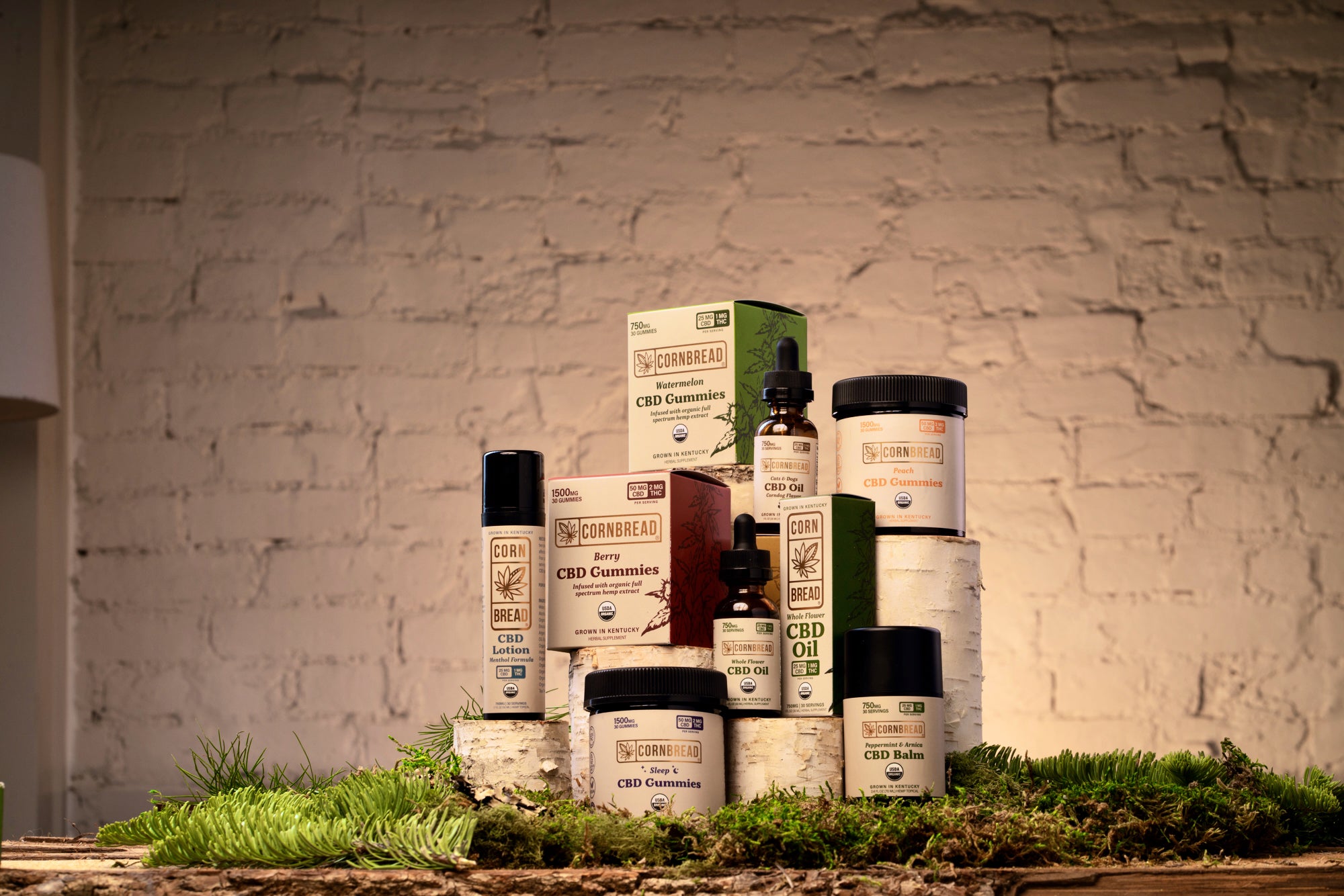
Cornbread Hemp is a family-owned company working to provide the best hemp-derived CBD oil, CBD capsules, and CBD gummies in the region.
We understand the importance of finding natural wellness supplements that are as potent and effective as advertised, while being free from harmful pesticides and other contaminants. This is why Cornbread Hemp offers USDA certified organic CBD products made with our full spectrum Flower-Only™ extract. We use organic sugarcane ethanol extraction and subject all of our products to rigorous third party testing.
Shop our online store today to see how our full spectrum CBD products can help you achieve balance and support your overall health and well-being.













 Log in
Log in











